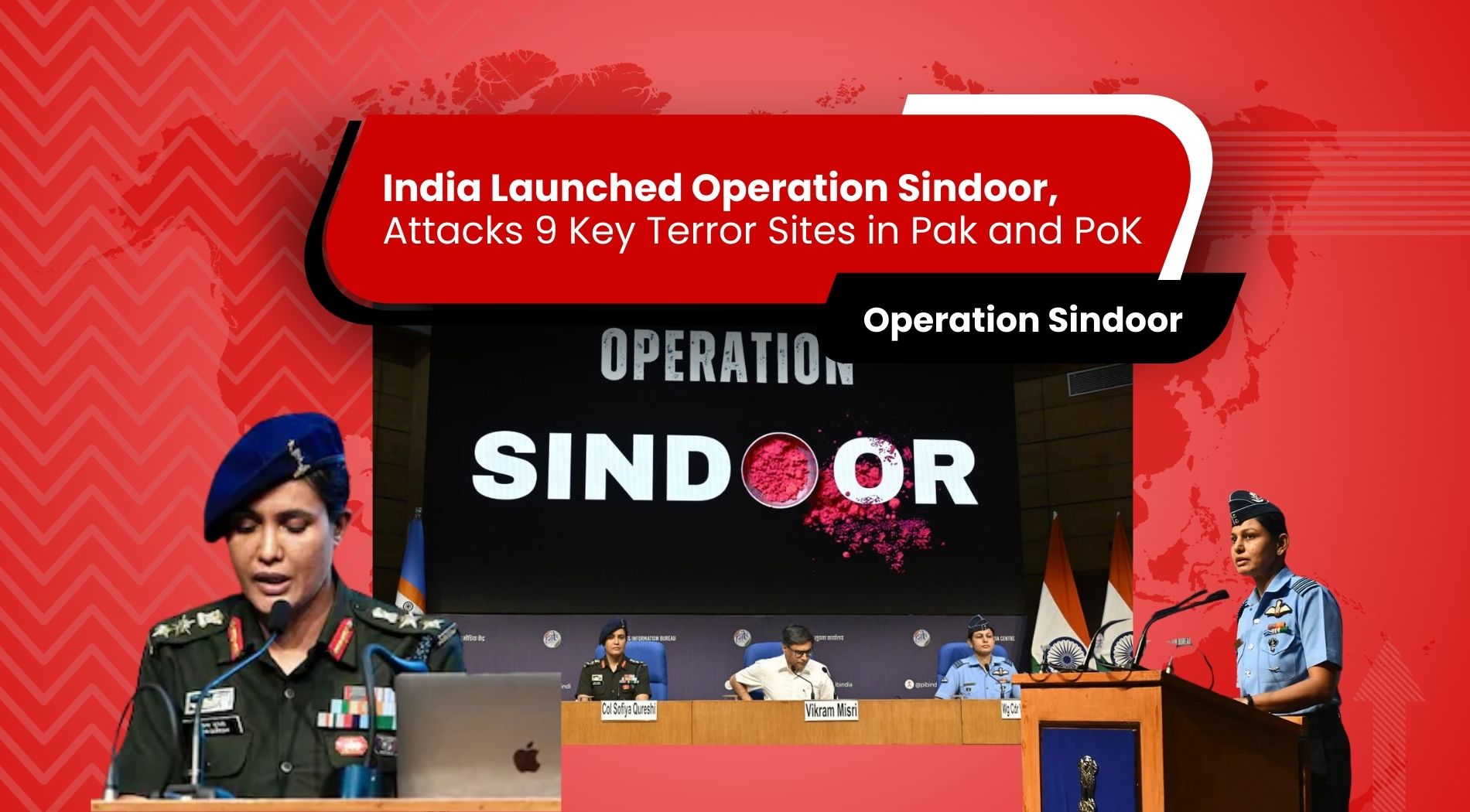April 22’s terror attack in Kashmir’s Baisaran Valley had claimed 26 innocent lives. India has suppressed the anger for far too long but this one was beyond acceptable. It infuriated the entire nation. They entered the valley and killed the men based on their religion. So what did Pakistan think? That India will sit still and let the terrorists do as they wished? Not this time.
So, while the country discussed the mock drill announced for May 7, India silently delivered to Pakistan exactly what it deserved. Operation Sindoor is what they call it and ‘Justice is served’ is what they believe. At silent hours when everyone was sleeping peacefully, the Indian Air Force was on a mission. Without even crossing the border, it struck 9 terrorist sites in Pakistan and PoK within just 25 minutes.
The Symbolism behind the Operation’s Name
Officials wisely chose the name of the operation. Sindoor is the red vermilion powder Hindu married women apply to the parting of their hair. It symbolises marriage and identity.
During the Pahalgam attack two weeks ago, the terrorists killed Hindu men, leaving behind their spouses and other female family members. Because of the attack, so many women lost their husbands, their reason behind their Sindoor. It was only thoughtful to name this Operation Sindoor because this comes as a reply to innocent lives claimed in the Baisaran Valley. This was India’s way of telling the enemy that the nation will not tolerate another terror attack.
Operation Sindoor
Operation Sindoor struck with speed and precision. Lasting about 25 minutes, the Indian Air Force and missile command launched 24 precision strikes on 9 key targets inside Pakistan and Pakistan-occupied Kashmir. Indian forces chose each target after days of intelligence gathering and satellite surveillance.
Here are some of the most critical hits:
- Bahawalpur: Headquarters of Jaish-e-Mohammed. India claims multiple leadership figures were present at the time of the strike.
- Kotli: A known Lashkar-e-Taiba training camp – reportedly housing dozens of fresh recruits.
- Muzaffarabad: A religious complex doubling as a command and control center for The Resistance Front, the group that claimed the Pahalgam massacre.
he Indian government insisted that they avoided civilian casualties and targeted only terrorist infrastructure. High-resolution drone footage reportedly guided every missile.
However, Pakistan says the strike killed 26 civilians and injured many others.
The Reaction
Pakistan wasn’t going to sit still either. Within hours, it responded with heavy artillery fire across the Line of Control. Lives lost. Diplomats expelled. Borders closed. Airports shut down. Thousands of travelers stranded. Military reserves mobilized.
Pakistan declared a state of emergency in Punjab, while India cancelled over 200 flights, put its northern commands on high alert, and moved artillery toward forward bases.
The region hasn’t seen tension like this since Balakot in 2019 – or arguably, since Kargil.
International powers have shown concern and insisted on holding back now. No one wants war but peace. But both nuclear nations want to avoid appearing as the first to blink.
Conclusion: A Dangerous New Doctrine
With Operation Sindoor, India has sent across a message – no more nonsense will be tolerated. Terrorism is unacceptable. It’s not just about defense anymore – it’s about deterrence. A red line was crossed in Pahalgam. India answered with another red line of its own: the kind you paint with explosions.
Whether this bold maneuver restores deterrence or ignites something worse remains to be seen.
For now, the world watches South Asia with bated breath, praying the crimson doesn’t deepen any further.
Read More Article: India prepares for Mock Drill on May 7 amidst Indo-Pak tension
Please subscribe to the Bulletins Hub for the latest updates. If we forget anything, share your ideas in the comments section.




